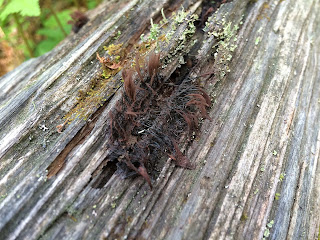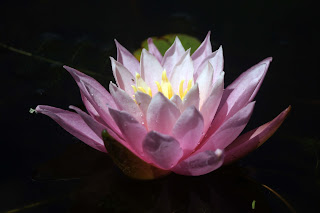 |
| maine painted turtle - you can tell by the license photo by Jim Conlan |
Welcome to the vinalhaven sightings report – July 22nd, 2016
Big thanks to MCHT and VLT and to you! The loyal and unloyal readers! We
love you all!
Highlights – Fishfly, Great Horned Owls,
Swainson’s Thrush, Red-billed Tropicbird, Harlequin Duck, Painted Turtle, Brown
Creeper, Shorebirds!!!!!, osprey nests, mushrooms, slime mold, plant stuff, stuff
I find in the woods and much, much more!
 |
| water lily |
Business – contact us! We appreciate/hope
for/demand your involvement and will post everything and anything you send. Our
email is vinalhavensightings@gmail.com . Let us know if you want to be on
the “list” to get announcements when new VSRs are posted. Everyone makes the
list!
Thanks – to
those who’ve contributed to this VSR and to those in the future and the past!
 |
| dead duck |
Tiit trick –
click on the photos to make them as big as your monitor will let them. Poignant
message us being in Estonia as I type!
Bird walks –
Are happening weekly, either on Tuesdays, Wednesdays or Thursdays! Consult the
VLT website for exact dates.
 |
| dead squirrel |
 |
| blue skimmer of some sorts! sorry - little time to look up! you look it up! |
Sightings – on the water with Skua! (And John Drury!) – Word on the streets (or in the
friend more specifically) is that the Red-billed
Tropicbird is being on a somewhat regular basis these days. What is nice to
hear is that the Tropicbird’s fondness for buoys (likes to mount them, like any
confused seabird should) has broadened and is now not exclusive to certain
color patterns. We love to hear about birds being open-minded, even aging birds
like this one – at least 11 years old at this point. Also seen recently on
trips to Seal/Matinicus Rock – Harlequin
Duck, Greater and Manx Shearwaters, Leach’s Storm Petrel.
 |
| yellow patches amanitas are hot! |
Do yourself a favor and sign up for a
trip with John today before all trips are full! For more info check out john’s
website - sightingsfromskua.blogspot.com
– to sign up!
Also from John
– Black Tern in flight over the bay, Leach’s storm petrels heard at night from
Greens Island, 8’ tuna sighting,
 |
| lane's island osprey nest - digiscoped photo by Rick Morgan |
Over the water
– osprey nests seem to be doing
great this year. Rick Morgan and Jim Conlan have sent in some photos of
local nests to Crockett Cove and Lane’s.
 |
| osprey nest - crockett cove photo by Jim Conlan |
Bird walks – (7/12) – 4 Bald Eagles, Osprey, Cedar Waxwing, Goldfinch, Purple Finch,
Common Eider, Common Loon, Common Yellowthroat, common tern, Grey Catbird,
Red-breasted Nuthatch, Chickadee, northern parula, black-throated green
warbler, song sparrow, white-throated sparrow, short-billed dowitcher, lesser
yellowlegs, least sandpiper.
 |
| common yellowthroat from 7/5 bird walk photo by Rick Morgan |
Highlights –
(other than the nice people along) welcoming back some early shorebirds was fun. Some great looks at eagles and loons popping up right after the people hoping to see
loons left! Timing is everything! Well, timing and having your eyes open.
Another beautiful morning with the tweeters…
Bike Ride around the island road – (7/12) Brown
Creeper, Ovenbird, Magnolia Warbler, Nashville Warbler, Black and white,
Black-throated Green warblers, northern Parula, Broad-winged Hawk, hermit
thrush,
 |
| picking raspberries |
Around the island - 31 Reach Road – (7/11-12) –
Broad-winged Hawk, Swainson’s Thrush (singing), Brown Creeper….Carrying place
preserve (7/11) – Brown Creeper, Belted Kingfisher, Golden-crowned Kinglet…Basin
(7/11) – Brown Creeper, Great Horned Owl (mack’s pond visual), Winter Wren,
Hairy Woodpecker…Huber (7/12) – Brown Creeper, Winter Wren, Golden-crowned
Kinglet, ovenbird…..Wharf Quarry Road - Jim Conlan reports hearing Great Horned Owls calling from the beginning of Wharf Quarry Road recently! sweet!
Notes on above – Brown Creepers seem to be singing on every preserve I visit, pretty much
the same with Winter Wren. Haven’t
heard this much of these two species since April or so. Swainson’s Thrush singing in the morning is kind of heavenly –
right out the back door no less.
 |
| tawny grisettes are my favorite amanita |
Fungus and slimes – little rain – OK some hefty rain in spirts – has inspired some local
fungus and slime molds to mix genes and disperse their spores! More to come
with more rain – and more fun in the woods for sure….some of our favorites are
starting to poke out – Tawny and Cecilia Grissettes, yellow patches, and
some nice dye-maker’s polypore!
 |
| yellow patches poking |
 |
| cacelia amanitas are pretty |
 |
| ....and strong! |
 |
| fresh dye maker's polypore! |
 |
| with a name like chocolate tube slime it just has to be good |
As well as some chocolate tube slime at Carrying place.
 |
| we love chocolate tube slime! really we do! |
 |
| loving the pink water lilies |
Plant stuff –
water lilies are fun. White ones on folly pond, and I can’t help but toss in a
pink one from St. George (the marsh). I just can’t help myself when it comes to
plants. Actually I can….
 |
| indian pipes poking! |
These indian pipes fought their way through the “tough duff” in Basin…
 |
| 1. this bee is just starting to penetrate |
And bees seem to like to like the sweet
treats irises offer. Who can blame them!
 |
| 2. a little closer to sweet reward |
 |
| 3. almost there |
 |
| 4. sweet bliss |
 |
| sweet looking iris |
 |
| fish fly, male |
Insects stuff - Fishfly - (Chauliodes pectinicornis) Family
corydalidae – Dobsonflies and fishflies. Don’t know what to say about this bad
boy, other than I had never seen one
before and it was on the side of the house. Nice antennae? You bet! Here’s
a little more about these dudes…
 |
| tough looking dude. I did not enjoy this stare down |
“In contrast to mayflies, which are small and usually live only 24 hours
as adults because they do not eat, fishflies are quite large, their wing span
being from 2.5 to 3". They will eat aquatic plants as well as smallish
animals including vertebrates like minnows and tadpoles, and may live up to
seven days as adults. Their entire lifespan is several
years, but most of this time is spent as larvae” – lifted from Wikipedia (so it has
to be true!)
I always like to contrast things with
mayflies. These guys are killers! Minnows
and tadpoles be warned! And 7 days as adults – better than mayflies! I
would imagine they are not eating minnows when they are adults, but as aquatic
larvae – which is the vast majority of their life! Several years as larvae, 7
days as an adult. They are hungry kids for most of their individual existence.
Very cool.
 |
| get a leg up! |
Stuff I find in the woods – folks who have been around me for any length of time
probably know I am not the biggest fan of red squirrels (or crows for that
matter!). so I was somewhat psyched to find squirrel body parts in the basin the other day – tail and leg –
right in the middle of the trail! Broad-winged hawk leftovers? Who knows and
who cares! Just leave some more!
 |
| not sure who or why someone would do this.... |
Roger gets a makeover – the most photographed mushroom on vinalhaven is along the Huber trail
– the big red-belted conk which I
lovingly refer to as “Roger”. This
mushroom has hardly changed (in the eyes of this human observer) over the last
12 years other than the random penny or dime jammed into it (not sure why or
how this tradition started) and was even highlighted as a food source for ironclad beetles in the last VSR.
 |
| but roger has never looked so homey! |
So it was a little surprising to come
back a week later and see that someone had built one of those “fairy house”
things on top of roger! Personally I have never built a fairy house but have
always admired the imagination and architecture involved in such building.
Anyway who has seen my bridges has seen the limits of my construction
abilities. I am not sure when “fairy houses” became popular, or if they act as
“visual noise” to some people and disturb their experience, but I have always
been a fan of “whatever gets you out there” and if building a house for fairies
on top of Roger is the worst thing you do then you are leading a charmed life. I
will keep on checking out the house as long as it lasts (nothing last forever
but the earth and sky – Kansas) to see if any fairies move in. it’s a pretty
sweet house, so it’s only a matter of time!
 |
| the poop is hanging on the left side of the trail have I ever mentioned how little I enjoy chainsawing in the summer? |
Doggie bags –
on the other end of the spectrum is the moron (or morons) who keep bagging
their dog’s poop (or maybe their poop?) and then leaving them on the trail or
hanging in a tree along the trail. Tip of the hat to them for using biodegradable
bags (how conscience of them!) but it makes no sense to bag the poop and then
leave it along the trail. Why not just flick the poop off the trail with a
stick? Why not just leave the poop on the ground so the bald steward can flick
it off the trail? Apparently this humanoid loves the feel of poop through a bag
(I for one care less for them) and just has to have that sensation in the tips
of their fingers. Whatever floats your boat I guess, and whatever gets you out
there, but both cases of bagged poop were easily handled by me tossing the
biodegradable bags into the woods. So simple!
 |
| this bag of poop is tucked under the right side of the closest spruce! right next to my sign! how rude! |
Someday I find out who is doing this
and we will drink a beer and laugh at stories of bagged poop. Until then my
friends! Until then…..
And some Leif action as always……
Legos still a hit, making stop action
movies with them these days….
 |
| this mime wasn't creepy |
And spending time in Estonia with Nana
and a mime!
 |
| iron maidens are creepy |
more Estonian pictures later! it's time to post!
Good times out there people! Enjoy
‘em!




























